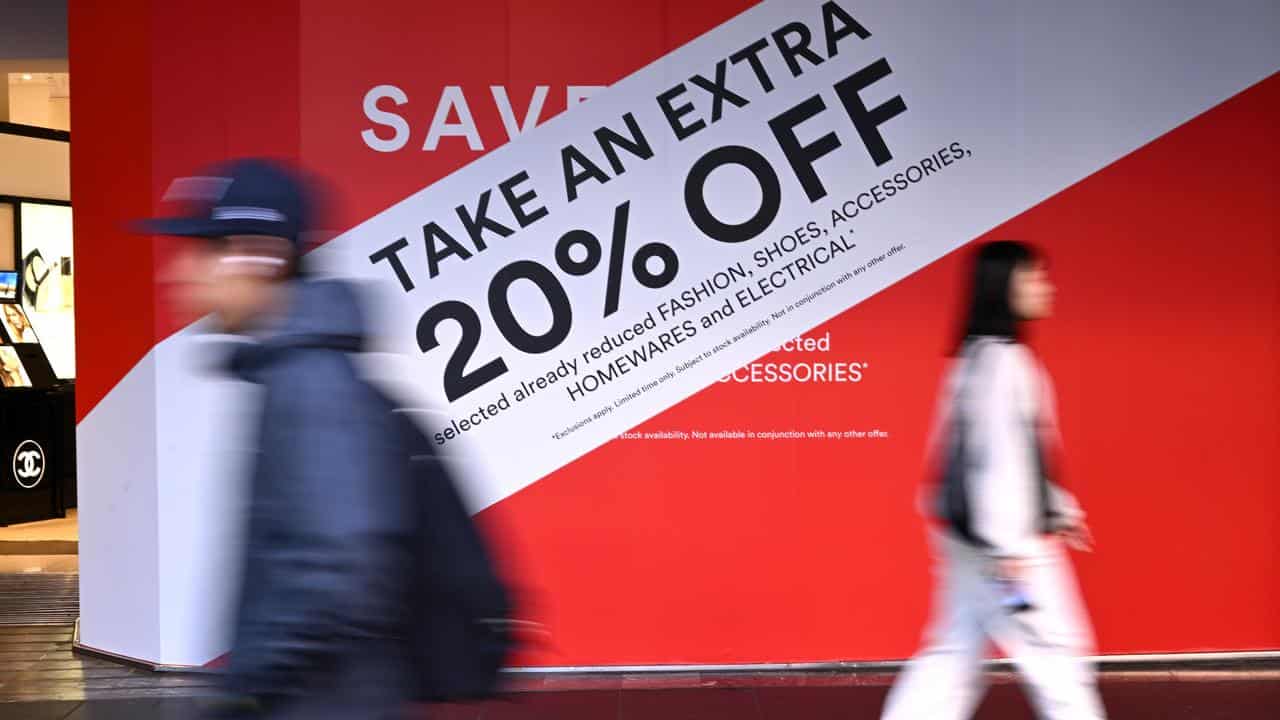
Further signs of belt tightening along with a slower pace of inflation could be enough to keep interest rates on hold.
Retail sales data has come in well below expectations as consumers snap their wallets shut in the face of rising prices and ballooning mortgage repayments.
The Australian Bureau of Statistics data, which is watched closely by the Reserve Bank for insights in consumer behaviour, sunk 0.8 per cent in June.
The pullback followed a 0.8 per cent lift in May and a minor 0.1 per cent fall in April.
The result was substantially weaker than the consensus forecast of a flat reading for the month.
ABS head of retail statistics Ben Dorber said turnover fell sharply in June as fewer consumers took advantage of sales in the lead up to the end of the financial year.
"This comes as cost of living pressures continued to weigh on consumer spending," he said.
He said an early start to end-of-financial-year discounting brought much of the action forward.
Discretionary spending led the slowdown, with department stores recording the largest fall of five per cent.
Clothing, footwear and personal accessory retailing dropped 2.2 per cent and housing goods retailing a minor 0.1 per cent.
Food spending was a mixed bag, with cafes, restaurants and takeaway down 0.3 per cent but food retailing up 0.1 per cent.
The bureau said growth in food-related spending had mainly been driven by rising prices and the latest inflation data showed further increases.
"Consumers are responding to these price rises by changing to cheaper brands or simply buying less," Mr Dorber said.
The ABS also noted quarterly sales volumes data due next week would help determine the role of rising prices in the spending numbers.
Commonwealth Bank economist Belinda Allen said consumer spending would keep weakening, although high levels of employment would counteract softening consumption somewhat.
"The material lift in interest rates to date and delayed pass through should add to the impact in the second half of 2023," she said.
For the Reserve Bank, signs of a spending slowdown will fuel the case for keeping the cash rate on hold when it meets next week.
The central bank has been lifting rates to tackle high inflation, with higher borrowing costs helping weigh on demand for goods and services, helping to bring down prices.
Combined with weaker-than-anticipated inflation data, the lacklustre retail trade numbers were enough to nudge some economists away from their forecasts for an August hike.
RBC economists have tentatively pushed forward the timing for where they expect a final interest rate hike to land, as has JP Morgan.
NAB also expects the RBA to stay on hold in August based on concerns the soft retail data could fuel the board's concerns of a larger slowdown in consumption than necessary, though suggests there could be more hikes to come in later months.
CBA economists foresee the central bank moving in August for the final time, as do HSBC, with the ultra tight labour market and lingering inflation risks still causes for concern.
ANZ economists expect to see the RBA stick with an extended pause but believe an August hike is not out of the question.
A survey of experts by comparison site Finder revealed a preference for a second month on hold for August, with 29 of 43 calling a pause.
This will see the cash rate stay at 4.1 per cent.




